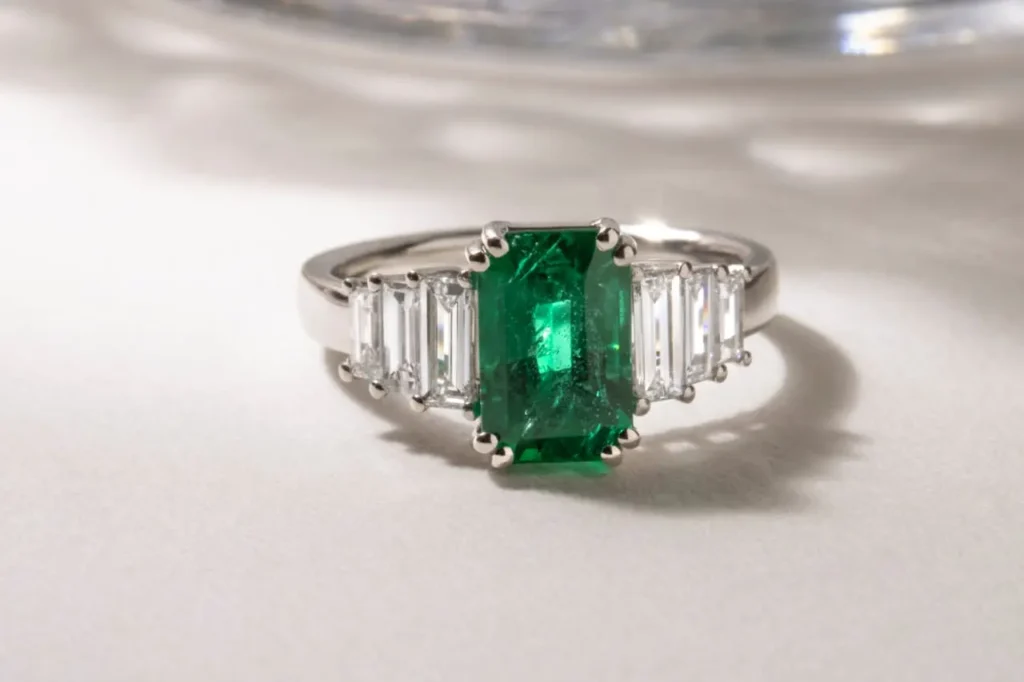Emeralds, the radiant green jewels that have captivated humanity for centuries, possess a charm that transcends time and trends. From ancient civilizations to modern-day fashionistas, emeralds have adorned the crowns of kings and queens, the fingers of lovers, and the necks of the elite. But what makes these gemstones so alluring? Let’s delve into the mystique of emeralds and uncover the secrets behind their timeless allure.
The Mesmerizing Hue of Emeralds
First and foremost, Gemstone Emerald Meaning is it’s mesmerizing hue. Their vivid green color, ranging from deep forest to vibrant grassy tones, is unmatched in the gemstone world. This distinct coloration is attributed to the presence of chromium and vanadium in the crystal structure of the gem, giving emeralds their signature green glow. Each emerald’s hue is as unique as a fingerprint, adding to its individuality and desirability.
The Rich History of Emeralds
The captivating color of emeralds boast a rich history steeped in legend and lore. In ancient civilizations such as Egypt and Greece, emeralds were revered as symbols of fertility, rebirth, and eternal youth. Cleopatra, the legendary queen of Egypt, was said to have a penchant for emeralds, adorning herself with these precious gems to enhance her beauty and power. Throughout history, emeralds have been associated with royalty and nobility, embodying opulence and prestige.
The Spiritual Significance of Emeralds
But emeralds are more than just symbols of wealth and status; they also hold spiritual significance in many cultures. In Hindu tradition, emeralds are believed to represent the planet Mercury, governing intelligence and communication. Similarly, in ancient Roman mythology, emeralds were linked to Venus, the goddess of love and beauty, embodying passion and desire. Even today, emeralds are cherished for their metaphysical properties, believed to promote healing, growth, and harmony.
The Geological Marvel of Emeralds
From a geological standpoint, emeralds are a marvel of nature’s craftsmanship. Formed deep within the Earth’s crust, emeralds are created under intense pressure and heat, typically in metamorphic rock formations. The journey from rough stone to polished gem is a painstaking process that requires precision and skill. Skilled lapidaries carefully cut and shape each emerald to enhance its natural beauty, maximizing its brilliance and clarity.
The Practical Applications of Emeralds
Emeralds have practical applications in various industries. Due to their exceptional hardness and durability, emeralds are often used in jewelry, watches, and other luxury goods. Their resilience makes them suitable for everyday wear, ensuring that they withstand the test of time. Moreover, emeralds are prized by collectors and connoisseurs for their rarity and exclusivity, making them valuable assets for investment and appreciation.
Conclusion: Nature’s Enduring Beauty in Emeralds
As we navigate the complexities of the modern world, emeralds serve as a reminder of nature’s enduring beauty and resilience. In a society driven by consumerism and materialism, emeralds offer a connection to the natural world, grounding us in a sense of wonder and awe. Whether admired for their exquisite craftsmanship or cherished for their symbolic meaning, emeralds continue to captivate hearts and minds around the globe. So the next time you gaze upon a shimmering emerald, take a moment to ponder its mystique and marvel at the magic of nature’s majesty.
